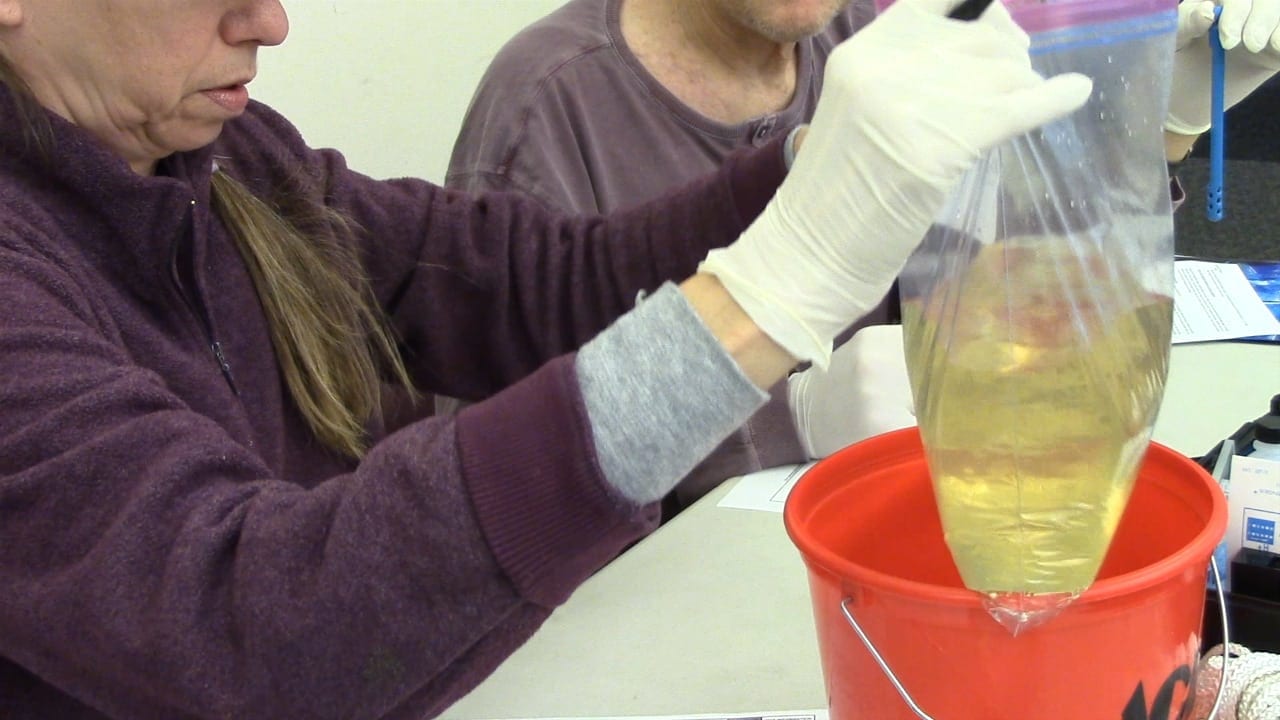By Rayleigh Rozier 
Georgia Adopt-A-Stream is a program housed by the state’s Environmental Protection Division that monitors the quality of streams and their surrounding habitats. Local groups like the Oconee County Watershed Network register with Adopt-A-Stream and monitor their own bodies of water using the EPD’s resources. There are a number of ways local Adopt-A-Stream programs monitor water quality:
Watershed Survey and Map Assessment
One of the least costly ways a volunteer program can assure the quality of their stream is to conduct a watershed survey. This yearly overview of the body of water and surrounding environmental factors requires very little training or equipment, and is typically the starting point for groups looking to monitor their stream.
First, volunteers create a map of the body of water and surrounding areas, where they denote features like monitoring points, pipes and drainage ditches, and sections of land affected by construction, agriculture and industry. On this map, they then identify land uses that have the highest potential to impact water bodies, considering traffic information as well.
The idea is to provide a broad overview of the body of water and better understand where volunteers can most effectively improve water health. The watershed survey achieves this by:
- Screening the water for pollution problems and identifying potential sources of pollution
- Helping interpret information received from other types of monitoring
- Identifying sites for monitoring and providing a blueprint for possible restoration efforts
- Educating volunteers and the local community about potential pollution sources and the stressors affecting the stream and its watershed
Visual Stream Monitoring
A less common form of water monitoring is a visual evaluation of the stream. Once per season, volunteers look at the visible conditions of the stream, which are often the most critical. Problems such as water pollutants, habitat damage, sedimentation and erosion can be observed without testing. This form of monitoring is less common because most dangers to a stream are not readily visible without in-depth evaluation.
Biological or Macroinvertebrate Monitoring
Another way to monitor the health of a stream is to evaluate the health of the wildlife that live in it. Volunteers take inventory of the macroinvertebrates, such as aquatic insects, crustaceans, worms and mollusks that live in the stream habitat. While a biosurvey is not a conclusive picture of the water’s health on its own, the amount and type of wildlife inhabiting a stream is a good indicator of pollution. For example, if a stream is inhabited only by organisms that can tolerate pollution, with pollution-sensitive organisms missing, the area has likely experienced pollution.
According to Adopt-A-Stream, aquatic macroinvertebrates are good indicators of stream quality because:
- They are directly affected by the physical, chemical and biological conditions of the stream
- They can’t escape pollution, and therefore show effects of both short- and long-term pollution events
- They are abundant in most streams, even those that lack fish
- They are relatively easy to collect and identify with inexpensive materials
Chemical Monitoring
Chemical testing allows volunteers to study specific water quality characteristics, in addition to the overall health of the stream. Using this method, the water must be sampled more frequently, typically once month at the same time and location for comparable data. Because stream conditions are very sensitive to changes in the weather, it is important to denote these conditions as well.
A wide variety of tests may be done on fresh water, but Adopt-A-Stream said the four core measurements they recommend are temperature, dissolved oxygen, pH balance and conductivity. Volunteers collect vials of water from the stream and use a $190 kit that measures these factors. Tests for settleable solids, water clarity, phosphorus, nitrogen, chlorine, total dissolved solids, or fecal coliform levels can be added to the sampling depending on the specific concerns of the community. Water can be evaluated for these factors using a $300 advanced kit.
Bacterial Monitoring
Bacterial monitoring is sampling focused entirely on detecting E. coli bacteria in a stream. Adopt-A-Stream suggests this testing be conducted monthly during dry weather conditions and at a consistent time. Bacterial monitoring indicates the presence of disease-causing agents in the water and determines how safe the water is for recreational activity. Volunteers collect samples in a device called Whirl-pak bags, plate the water on petri dishes, and place them in an incubator for 24 hours. The results are then analyzed, with the color of the sample indicating the type of bacterial growth present.
Georgia Adopt-A-Stream hosts workshops on all of these forms of water monitoring. There are currently no workshops scheduled for Northeast Georgia in the near future.






